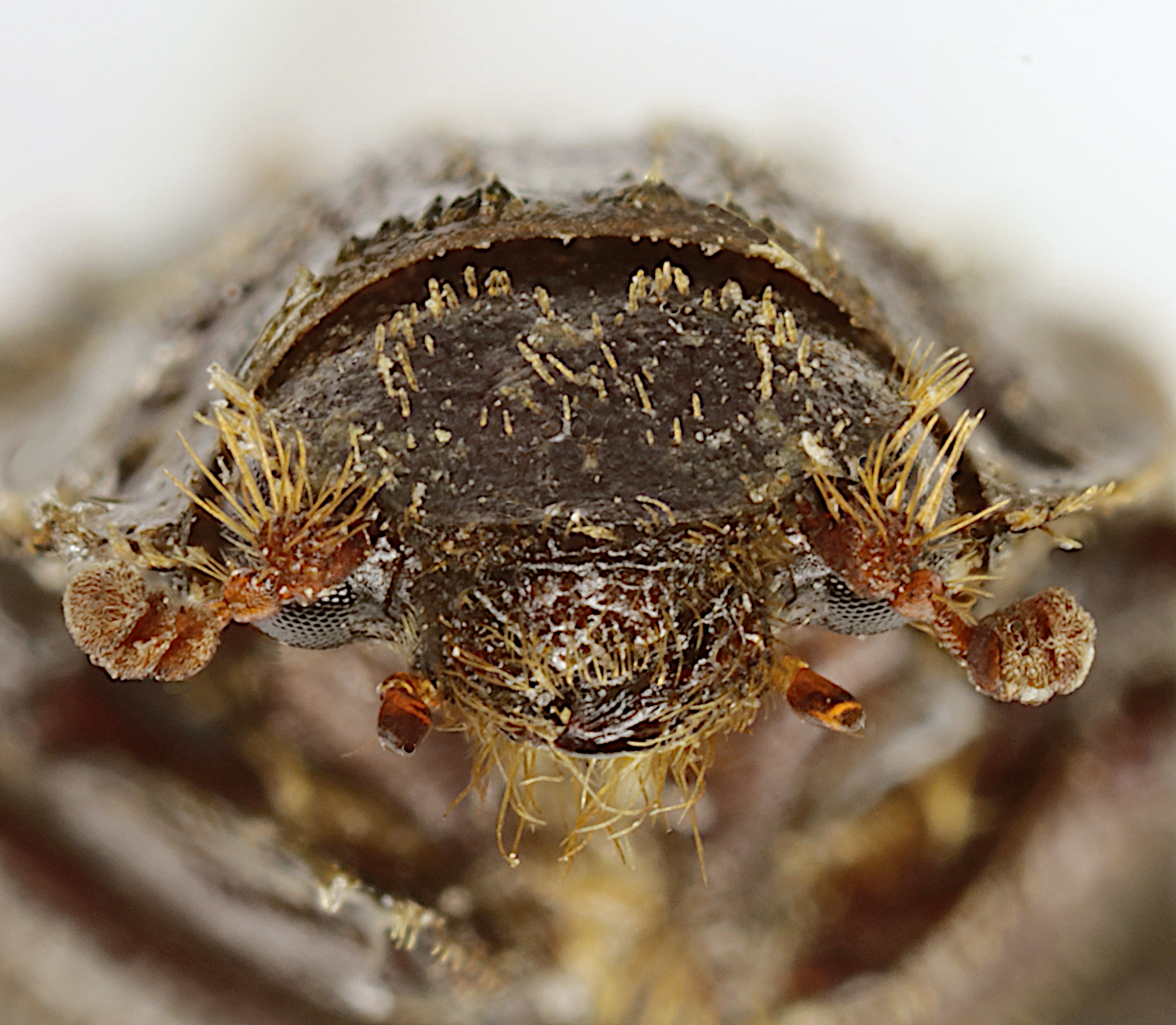|
Omorginae
''Omorginae'' is a subfamily of beetles in the family Trogidae which includes extant species and extinct beetle species from the Lower Cretaceous. The subfamily contains the following genera: *Cretomorgus Nikolajev, 2007 *Omorgus ''Omorgus'' is a genus of beetles of the family Trogidae Trogidae, sometimes called hide beetles, is a family of beetles with a distinctive warty or bumpy appearance. Found worldwide, the family includes about 300 species contained in four or ... Erichson, 1847 * Polynoncus Burmeister, 1876 References {{Trogidae-stub Trogidae ... [...More Info...] [...Related Items...] OR: [Wikipedia] [Google] [Baidu] |
Cretomorgus
''Cretomorgus ikhbogdensis'' is an extinct, fossil species of hide beetle that lived in modern-day Mongolia during the Lower Cretaceous Lower may refer to: *Lower (surname) *Lower Township, New Jersey *Lower Receiver (firearms) *Lower Wick Lower Wick is a small hamlet located in the county of Gloucestershire, England. It is situated about five miles south west of Dursley, eight ..., approximately 112 million years ago, making it the earliest preserved species of the subfamily Omorginae. ''C. ikhbogdensis'' is the sole species of the genus ''Cretomorgus''. References † Fossil taxa described in 2007 Prehistoric beetles {{Trogidae-stub ... [...More Info...] [...Related Items...] OR: [Wikipedia] [Google] [Baidu] |
Trogidae
Trogidae, sometimes called hide beetles, is a family of beetles with a distinctive warty or bumpy appearance. Found worldwide, the family includes about 300 species contained in four or five genera. Trogids range in length from 2 to 20 mm. Their shape is oblong to oval, with a generally flat abdomen. Their color ranges from brown to gray or black, and they often encrust their bodies with soil. They resemble scarab beetles with heavy limbs and spurs. They are scavengers and are among the last species to visit and feed on carrion. They are most often found on the dry remains of dead animals. Both adults and larvae eat feathers and skin. Some species are found in bird and mammal nests. Details of the life histories of many species are poorly known, since many are specialized to particular types of nests. They are often overlooked by predators and collectors due to their behaviors of covering their bodies with soil and becoming motionless when disturbed. This group may also be con ... [...More Info...] [...Related Items...] OR: [Wikipedia] [Google] [Baidu] |
Subfamily
In biological classification, a subfamily (Latin: ', plural ') is an auxiliary (intermediate) taxonomic rank, next below family but more inclusive than genus. Standard nomenclature rules end subfamily botanical names with "-oideae", and zoological names with "-inae". See also * International Code of Nomenclature for algae, fungi, and plants * International Code of Zoological Nomenclature * Rank (botany) * Rank (zoology) In biological classification, taxonomic rank is the relative level of a group of organisms (a taxon) in an ancestral or hereditary hierarchy. A common system consists of species, genus, family, order, class, phylum, kingdom, domain. While ... Sources {{biology-stub ... [...More Info...] [...Related Items...] OR: [Wikipedia] [Google] [Baidu] |
Lower Cretaceous
Lower may refer to: *Lower (surname) *Lower Township, New Jersey *Lower Receiver (firearms) *Lower Wick Lower Wick is a small hamlet located in the county of Gloucestershire, England. It is situated about five miles south west of Dursley, eighteen miles southwest of Gloucester and fifteen miles northeast of Bristol. Lower Wick is within the civil ... Gloucestershire, England See also * Nizhny {{Disambiguation ... [...More Info...] [...Related Items...] OR: [Wikipedia] [Google] [Baidu] |
Omorgus
''Omorgus'' is a genus of beetles of the family Trogidae with about 140 species worldwide. ''Omorgus'' beetles are generally between 9 and 20 mm long. Taxonomy ''Omorgus'' has three subgenera, '' Omorgus (Omorgus)'', '' Omorgus (Afromorgus)'', and '' Omorgus (Haroldomorgus)'', with the following species: Subgenus ''Omorgus'' * '' Omorgus alatus'' (Macleay, 1888) * '' Omorgus alius'' (Scholtz, 1986) * '' Omorgus alternans'' (W.S. Macleay, 1826) * '' Omorgus amictus'' (Haaf, 1954) * '' Omorgus aphanocephalus'' (Scholtz, 1986) * '' Omorgus asper'' LeConte, 1854 * '' Omorgus augustae'' (Blackburn, 1892) * '' Omorgus australasiae'' (Erichson, 1842) * '' Omorgus badeni'' (Harold, 1872) * '' Omorgus borrei'' (Harold, 1872) * '' Omorgus brucki'' (Harold, 1872) * '' Omorgus candezei'' (Harold, 1872) * '' Omorgus candidus'' (Harold, 1872) * '' Omorgus capillamentis'' Strümpher & Scholtz, 2011 * '' Omorgus carinatus'' (Loomis, 1922) * '' Omorgus carinicollis'' (Scholtz, 1986) * '' Omorgus ... [...More Info...] [...Related Items...] OR: [Wikipedia] [Google] [Baidu] |
Polynoncus
''Polynoncus'' is a genus of beetles of the Family Trogidae. It contains the following species: :'' Polynoncus aeger'' ( Guerin-Meneville, 1844) (South America) :'' Polynoncus aricensis'' (Gutierrez, 1950) (South America) :'' Polynoncus bifurcatus'' (Vaurie, 1962) (South America) :'' Polynoncus brasiliensis'' (Vaurie, 1962) (South America) :'' Polynoncus brevicollis'' (Eschscholtz, 1822) (South America) :'' Polynoncus bullatus'' (Curtis Curtis or Curtiss is a common English given name and surname of Anglo-Norman origin from the Old French ''curteis'' (Modern French ''courtois'') which derived from the Spanish Cortés (of which Cortez is a variation) and the Portuguese and Gali ..., 1845) (Chile, Argentina) :'' Polynoncus burmeisteri'' (Pittino, 1987) (Argentina) :'' Polynoncus chilensis'' (Harold, 1872) (Chile, Argentina) :'' Polynoncus crypticus'' ( Diéguez, 2019) (Chile) :'' Polynoncus diffluens'' (Vaurie, 1962) (Chile) :'' Polynoncus ecuadorensis'' Vaurie, 1962 (Ecuador) ... [...More Info...] [...Related Items...] OR: [Wikipedia] [Google] [Baidu] |
